There I was, rushing down the soccer field with the ball at my feet, adrenaline pumping through my veins, sweat rolling down my face. I reel my leg back to take a shot on goal just to hear a snap and to find myself lying on the field. Grabbing my knee, seeing my teammates surrounding me, it was at that moment I knew it had happened again. In a blink of an eye I saw nine months of surgery, recovery, and intense rehabilitation flash before me. I have torn my ACL for the third time within a four year span. With that being said, I am aiming to gather information regarding everything that goes into ACL prevention, including what steps are critical for that prevention, and how the prevention process can be strengthened in female athletes. “ACL tears range from two to four times greater in female basketball and soccer athletes than in males playing the same sports.”1 Female athletes are at greater risk to tear their ACL than males have ever been, and this article will embark on the precautions and preventative work that is seen to help the numbers of ACL tears in female athletes diminish.
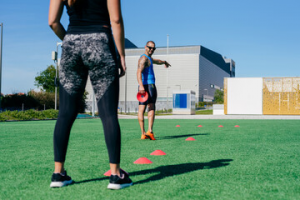
Females have a higher tendency to tear their ACL, usually from accelerating, jumping, cutting, decelerating, landing, and doing short sprints, all of which are needed to perform at a higher levels in many sports. To stop the number of injuries, exercises have been created to strengthen all the athletic movements used when tearing the ACL ligament, in a prevention effort. Healing from my third tear, I have been doing a drill called the “T-drill,” which is a short cone drill that hones in on quick changing of directions and speeds, which is one of the number one causes of ACL tears in female athletes. The T-Drill is a well-known cone agility drill that is structured to strengthen the muscles needed to create those quick turns that female athletes are seen to do so often. This drill is the most widely used exercise for prevention of ACL tears when making these game-like movements.
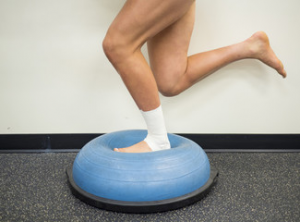
Other aspects of prevention-work for females are eccentric and plyometric exercises. “It is apparent that, despite all of the training methods inducing improvement outcomes to various extents, combined (eccentric/plyometric) training was the most effective protocol to stimulate positive changes…On this basis, combined protocol represents the most efficacious training program as it exerts positive effects on both stability and functional performance in the period of elite female athletes.”2 Eccentric exercises are slow and long movements focusing on one muscle group. The most common exercise is single leg balance. Being a soccer player, I would do a lot of single leg balances on an uneven surface to promote balance as well as muscle strengthening. Furthering into my preventative work, I would do a single leg balance and add a volley with a soccer ball to mimic game-like scenarios. Ultimately, I want to have my muscle groups and balance as acquainted as possible.
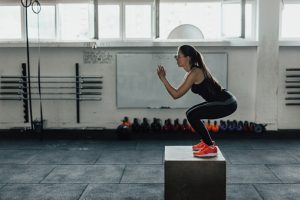
Plyometric exercises, which are very beneficial to the prevention of ACL tears for females, are classified as quick bursts of jumping, usually seen in performing squat jumps, box jumps, and a number of landing drills. These are very important because the focus is on strengthening the fast twitch muscles, but mainly the shift of females’ knees when landing. My doctor always told me not to land from a jump and let my knees shift to the center of my body. This can cause extreme knee weakness as well as a high probability of injury. This is why plyometric exercises are very efficient when working to prevent ACL injuries, because it hones in on knee stability and strength.
There is so much that goes into prevention, especially for female athletes. As I am pursuing a job in medical sales, I’ve been persuaded that certain appliances can help this process tremendously. For example, the use of the Alter-G treadmill is an appliance that is targeted to take off pressure on the body when running, and is proven extremely effective. One starts by being zipped into a large inflatable bag attached to the treadmill. Once zipped in, air is inflated into the bag, which results in a run with no weight from your hips down. This exercise tool is astounding, being able to run without the constant impact and weight on athletes knees is very beneficial to protecting and preventing ACL injuries. Imagine what this device can also do for aging knees as well! Using the advanced technology that is at our disposal now, there are still ways to exercise and rehabilitate to work towards bringing ACL injuries down in female athletics.
ACL injuries in female athletes can have harmful effects to ones overall well-being throughout life, and can impair the basic fundamentals needed. Unfortunately, these types of injuries can be difficult to repair and have long-term lingering effects later in life, such as the encouragement of arthritis. Using some simple exercises can assure athletes, and anyone with an ACL tear, effective long-term rehab of the knee. More importantly, these simple repetitive drills can be used consistently to strength the knees of healthy athletes; but not all coaches and trainers understand and encourage this. Athletes like myself learn the hard way after repeated tears and physical therapy. ACL prevention programs continue to make improvements each year. Continued awareness of the risk factors for female athletes, along with the new innovations in technology and exercises, gives hope of one day narrowing down the numbers of ACL tears, especially in women.
- M. L. Ireland, “Anterior Cruciate Ligament Injury in Female Athletes: Epidemiology,” Journal of Athletic Training 34, no. 2 (April 1999): 150–54. ↵
- Sofien Kasmi et al., “The Effects of Eccentric and Plyometric Training Programs and Their Combination on Stability and the Functional Performance in the Post-ACL-Surgical Rehabilitation Period of Elite Female Athletes,” Frontiers in Physiology 12 (2021): 954, https://doi.org/10.3389/fphys.2021.688385. ↵
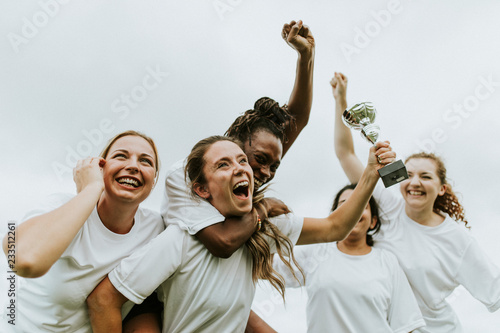
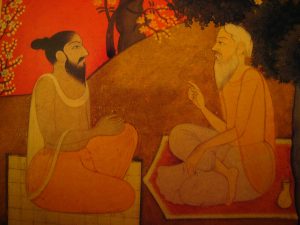

23 comments
Jaedon E
Great Topic !!
I love this topic because I have torn my ACL in my right knee and it is scary and painful. As well as unexpected, you know thinking “oh this and that would never happen to me” but when it happens what are we to do. Now eccentric and plyometric exercises those are what stood out to me because I haven’t heard of those exercises. Hopefully when I go for my therapy I will be doing something along those two exercises. Tearing a ligament in your body isn’t a joke though. It can take months to even a year to get full strength back. So I applaud on how you brought attention to the importance of ACL precautions and preventions.
Jackie Velasquez
This article was very interesting and informative. I admired that you put in several ways to help an ACL tear and how it can benefit the tear. The treadmill that allows you to run with no weight sounds really cool and something I would like to try since my knees are very sensitive especially when working out. I have never had an ACL tear, but I can’t begin to imagine the recovery that comes along with it.
Ryan Romine
This is a great article, it is really informative about the prevention of the injury. I know a lot of girl who have torn the acls playing sports especially soccer. One girl I know who is playing at Texas Tech even tore it twice. It would be so devastating tearing your acl and being out for so long during the rehab phase and having to rebuild the who ligament.
Idaly Oropeza
As a former athlete, hearing that a teammate of mind tore their acl was so unfortunate. It is exhausting not only physically but mentally as well. I think it is great that you wrote an article about how to prevent such a career threatening injury. I feel that many athletes always hear about tearing ligaments in knees and the dangers of it but they never educate athletes as to how to prevent that. It must have taken a lot out of you to have to relive some of those moments in order to write this article.
Kayla Braxton-Young
This article was very interesting. I feel like it really relates to what I am learning in a few of my classes. I am an exercise and sports science major with a teaching certification, and I am learning about different injuries. My sister tore her ACL while doing a simple stop. I never really knew how serious an ACL tear was until watching her recovery process. You see ACL tears often in sports, especially in football and basketball. This article reminded me of my sister and how strong a person she was while overcoming the injury and successfully playing a sport that she loves to her best potential.
Ana Barrientos
This article was super informative and super interesting to read about. I took Sports Medicine in high school and I always thought it was super intriguing, I loved learning about it. Even though sports medicine was not something I wanted to pursue, I just always enjoyed learning about it and learning the different parts of the body and ways to rehabilitate them. Overall, great article!
Kensley Dieckow
Hi MaKenzie, as someone who played soccer their entire life I saw so many girls tear their ACL in my years of playing. I also participated in a lot of the ACL prevention methods you researched in your article, and I can say they really do make a difference. Your topic is so relevant today since female sports are only becoming more competitive. Great Article!
Enrico Zorzin Onzi
Hello Makenzie, very interesting article. My major is Exercise and Sports Science, and I am pursuing a career as a coach. I learned some new information about ACL prevention reading your article, I did not know that ACL injuries are more common in females than males. I also had an injury in my left knee, I know how difficult it is to recover and get back into shape again. In my opinion, ACL prevention is extremely important in all sports, and exercises that help athletes strengthening their joints and ligaments must be implemented in their workout routine.
Abigail Delarosa
Whenever I saw the title of this article I knew I had to read it. When I was a sophomore in high school I was playing volleyball and I went up to spike a ball and when I landed on my left leg I felt a snap I tore my ACL too. I know the struggle of the recovery period and can relate to the pain and emotions that go behind this injury. I enjoyed reading this article not only because I could relate to the topic but the details you put in you did an amazing job.
Alexa Casares
I was interested the whole time! I have even started some research of my own on the topic! Thank you for enlightening and inspiring me!